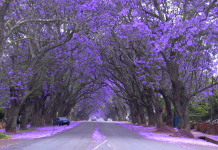By: Barbara Erickson
Mexico’s Mango Season is in the Spring!
Mango season in Mexico is during the spring. The pendulous golden fruits hang tantalizingly from their long heavy stems, making our mouths water at the sight of them. Mango fruit stands to pop up along the roadways and at the local mercado; the variety and abundance can be overwhelming.
Guerrero is the Country’s Top Producer
The state of Guerrero is the top producer of mangos in Mexico. In Guerrero, mangos account for 6.1 percent of cultivated land and 25 percent of the total value of all crops. The mango industry in Guerrero employs eighty-five thousand workers (not full-time) in fifty-eight municipalities in Guerrero.
The most popular varieties of mangos are the Manila and the Ataulfo; both are kidney-shaped and deep yellow. They are Asian varieties, tolerant of humidity and resistant to pests and disease. Early orchards in the state of Guerrero grew the petacon (paraiso) and Haden varieties; large oval fruits, generally a deep green color blushing to pink and orange when ripe. A favorite early-season mango is the criollo; a small kidney-shaped fruit often harvested when green and cooked whole with lots of sugar as a dessert.
Mangos originated in southern Asia, with cultivation going back at least five thousand years. Buddhist monks likely brought the fruit with them to eastern Asia around 400 BCE and the Persians carried it to Africa in the tenth century.
After the English occupied India in the nineteenth century, they brought the fruit to Europe. In India, there are over one thousand varieties, and it is there that mangos earned the title of “King of Fruits.” India is still the world’s largest supplier of all mango products.
The majestic mango trees can reach heights of thirty meters, with broad canopies and thick sturdy trunks. Trees have been known to live three hundred years and produce as many as six thousand fruits in a season! Here, in younger orchards, the trees are often topped after harvest to keep them manageable and encourage better yields.
Mangos are not only delicious; they are excellent sources of vitamin A, lutein, and zeaxanthin. There is some evidence that these substances are helpful in preventing macular degeneration, another reason to enjoy mangos at this time of year. They contain vitamin C, some of the B vitamins, and even vitamin E.
Mango leaves, bark, and skins are used medicinally to treat bronchitis and internal hemorrhaging. But beware: mangos are part of the family that includes poison ivy, and their skins and sap can be highly irritating.
Mango wood is medium-strong and hard and is used for construction; the bark is used to make a yellow dye and is tannic enough to tan hides. The kernels (located inside the hard, inner seed pod) are eaten after roasting to remove the astringency. A very useful tree indeed.
One way to enjoy the bounty of mangos we have this time of year is to make Mango Cobbler. See the link to the recipe below and get on your way to year-round enjoyment of this delicious fruit.
Related Articles:
The State of Guerrero is Full of Rich History, Culture, and Ethnic Diversity












